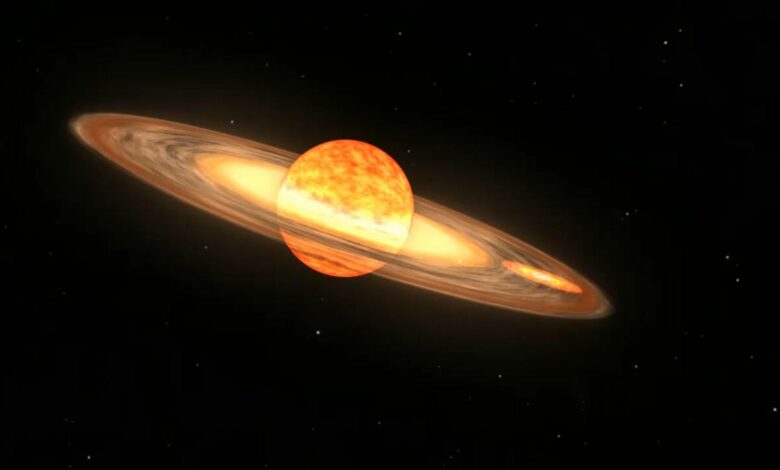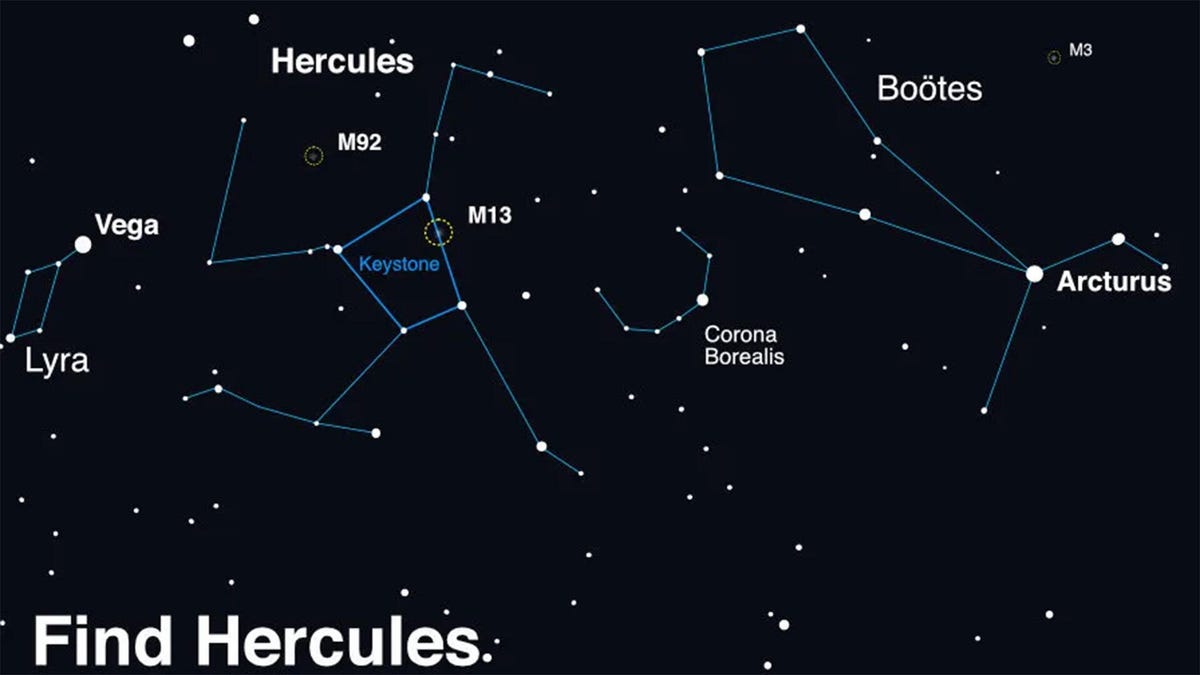You can watch a unique cosmic explosion from your own backyard


Seeing cosmic phenomena with the naked eye can be a rare occurrence, so when one does occur, it’s a good idea to sit up and take notice. Just like the recent solar eclipse and phenomena like the Aurora Borealis that have been flashing across our skies, there’s another dazzling event that you’ll want to experience as soon as possible. It’s time to join the hordes of NASA scientists and astronomers waiting with bated breath for a cosmic explosion to light up the night sky—and you won’t even need a telescope to see it.
Back in February 2016astronomers spread the news that the star system T Coronae Borealis had entered a “phase of unprecedented high activity.” Eight years later, that solar activity could result in a nova event large enough to be visible to the naked eye from Earth.
In a nova event, a white dwarf star pulls solar material from a nearby red giant. When the heat and pressure become too great, the result is a thermonuclear explosion. This makes the white dwarf appear brighter in the sky, but it does not disintegrate and once the explosion is over, the star returns to its original brightness. This enormous outburst is a nova.
The nova will be visible to the naked eye for up to a week after it occurs. During that time, it will appear as if a new star has appeared in the sky. According to NASA, the explosion could happen at any time, day or night, between now and September, although scientists say it could take longer.
What will the nova look like?
Those lucky enough to be looking up at the night sky when the show begins may be disappointed. It won’t look as explosive as it actually is. According to Dr. Elizabeth Hayes, project scientist for the Fermi Gamma-ray Space Telescope at NASA’s Goddard Space Flight Center, someone looking up at the sky when the event happens won’t see anything right away.
“If they keep watching over the next 24 hours, they’ll see a faint star appear and gradually get brighter,” Hayes told CNET. “Of course, someone on Earth will see their view distorted as the Earth rotates.”
“The best time to look with the eye is about a day after the outburst,” Hayes said. “But the nova will still be visible to the eye for a few days.”
This NASA video show what it looks like.
The last nova from this galaxy was in 1946
The cosmic light show is from T Coronae Borealis, also known as the Blaze Star or T CrB. It is a binary star system consisting of a white dwarf and an old red giant star system located about 3,000 light-years away from Earth in the northern crown of the Milky Way. It is part of the constellation Corona Borealis, which forms a distinctive “C” shape in the sky, especially during the summer months.
The white dwarf, the dead remnant of a star, is about the size of the Earth but has the same mass as the sun. Meanwhile, the aging red giant is a dying star that is ejecting material into space. The enormous gravity of the white dwarf pulls the ejected material from the red giant. Once the white dwarf has gathered enough material, it heats up so much that an uncontrolled thermonuclear reaction occurs. This explosion is called a nova.
The previous nova from this galaxy occurred in 1946. It is a cycle that has been ongoing since its discovery over 800 years ago.
“It is a unique event that will produce many new astronomers, giving young people the opportunity to experience a cosmic event that they can observe for themselves, ask their own questions and collect their own data,” said Rebekah Hounsell, an assistant research scientist at NASA’s Goddard Space Flight Center. “It will nurture the next generation of scientists.”
Where is Corona Borealis?
You’re probably not as familiar with Corona Borealis as you are with easier-to-spot constellations like the Big Dipper. It’s hard to find in the night sky unless it’s clear. Light pollution from big cities can also make it harder to find.
According to NASA, the easiest way to find Corona Borealis is to look for Vega and Arcturus, the two brightest stars in the Northern Hemisphere. (Skygazing apps for your phone can help with this.) From there, you can essentially draw an imaginary line between the two. Corona Borealis is almost exactly in the middle. You can use the image below to see what we mean.

The nova will occur in the constellation Corona Borealis, near the constellation Hercules and right between Vega and Arcturus.
Alternatively, you can also look for the Hercules constellation and Corona Borealis will be right next to it. Remember that you won’t be able to see the star in question until the nova explodes, so if you look up in the sky before it happens, the spot where the nova will occur won’t be visible.
When will the T CrB nova occur?
No one knows for sure. Astronomers and scientists only know that the nova could burst at any time. Most agree that the nova should occur sometime before September, although it could take longer.
Because the nova could occur at any time, NASA is counting on local astronomers and space enthusiasts to report it as soon as the nova occurs.
“Using social media and email, (observers) will send out immediate alerts,” said Elizabeth Hayshead of the Astroparticle Physics Lab at NASA Goddard. “We’re counting on that global community interaction with T CrB again.”
Early detection can also help NASA collect more data about the event and thus better understand its mechanisms.
“We’ll be observing the nova event at its peak and during its decay, as the visible energy of the outburst fades,” Hounsell said. “But it’s just as important to get data during the early rise of the outburst — so the data collected by those enthusiastic citizen scientists looking for the nova now will add dramatically to our findings.”
Do I need a telescope to see the nova?
No. NASA says that on a clear night the nova will be visible to the naked eye. It will also be quite bright, so it would be fairly noticeable. But as always, those with telescopes and binoculars will have a better view.
People with a powerful telescope can see the changes better.
“A telescope that measures the optical spectrum would see something very different from the spectrum of the red giant,” Hayes said. They would see that “nova bursts emit spectral lines at specific wavelengths. These tell us about the elements in the explosion and how fast the shock wave is moving away from the white dwarf.”
The nova won’t look like an explosion like you see in Michael Bay’s movies. It will just look like another star in the sky that wasn’t there before.
What is the difference between a nova and a supernova?
Most people have heard the term “supernova.” It is the last gasp of a star as it goes dark. However, that last gasp is also the largest explosion ever seen by humans, as the star violently ejects material into space. Scientists believe that supernovae are responsible for elements heavier than iron in the universeOddly enough, even the iron in your blood can be traced to supernovae or similar cosmic explosions.
A nova, on the other hand, requires two stars. One star is always a white dwarf, while the other is usually a red giant.
There are other types of novae. Hypernovae are supernovae that reach a certain size and brightness. They are usually about 10 or more times brighter than a standard supernova. Another type, an extremely rare kilonova, occurs when two neutron stars collide, releasing an incredible gravitational wave along with electromagnetic radiation.




